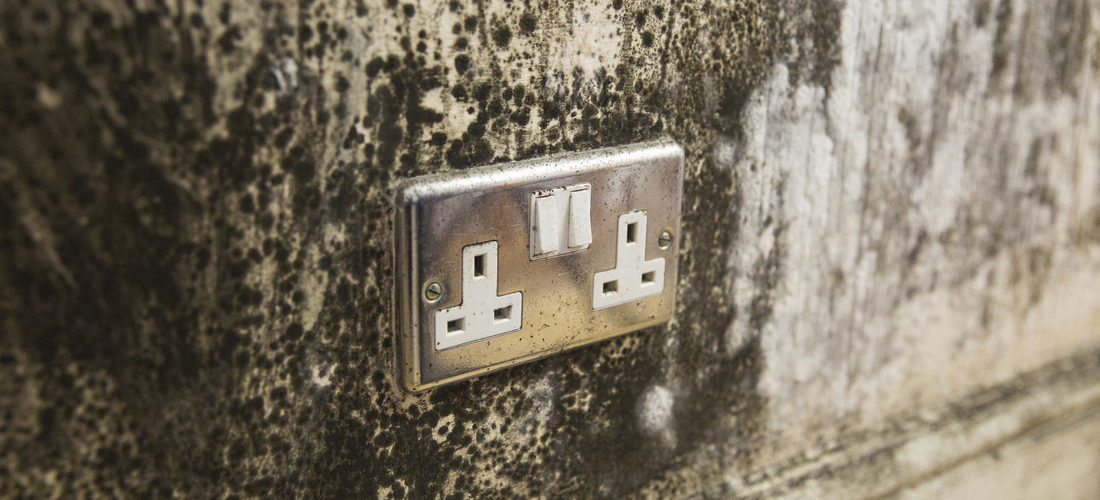What is damp and mould?
Put simply, damp and mould are caused by an excessive build-up of moisture. Moisture in buildings can be caused by leaking pipes, rising damp in basements or ground floors, or rain trickling in because of damage to the roof, walls or around window frames. A build-up of moisture indoors can also be caused by condensation. Condensation happens when warm, damp air comes into contact with cooler air, or a colder surface.
A small patch of damp on a wall might not seem too bad initially, but if it’s not dealt with quickly, it can increase and cause numerous problems. Plus, it can affect your health too and exacerbate health issues such as asthma. Always tell your landlord if you think you may have a problem with damp our mould.
What causes damp and mould?
Mould is a result of excessive moisture. It’s a type of fungus which thrives whenever there is moisture in the air. It commonly forms around showers, washing machines, dryers and in the kitchen.
Some common causes include:
- Poor ventilation
- Insufficient heating in rooms
- Non-existent insulation in walls
- Water sources such as damp clothes, plants, cooking and bathrooms
- Rain penetration through cracked walls, leaking roofs and windows
- Water soaking up through walls and floors (rising damp)
How to spot damp and mould in your home
A little bit of damp can grow and cause you and your family to develop a variety of health problems. Some of the common signs of damp to look out for inside your home include:
- A damp and musty smell
- The appearance of mould or mildew on walls, floors or ceilings
- Walls, floors or ceilings that feel cold or damp
- Dark or discoloured patches on walls or plaster
- Lifting or peeling wallpaper
- Excessive condensation on windows
The best way to check is to get an expert opinion. They will thoroughly check for any signs of damp inside or outside the property, determine what type of damp it is and the likely cause, plus offer advice on the best way of resolving it. Make sure you also speak to your landlord about the problem.
How to get rid of damp and mould
Once you’ve identified and fixed the source of moisture in your home, you can look at removing the mould. You may be able to remove it yourself, though you may need to get a professional to remove it.
Only remove mould yourself if it’s caused by condensation and covers an area less than 1 metre squared (1×1 metre or 3×3 feet). Don’t try to remove the mould yourself if it’s caused by sewage or other contaminated water.
Protect yourself from mould spores by wearing goggles, long rubber gloves and a mask that covers your nose and mouth. Open the windows but keep doors closed to prevent spores spreading to other areas of the house.
An expert will advise on the best approach to resolve your damp problems. It’s always worth getting a couple of quotes from different experts for comparison.
How to prevent damp and mould in your home
It’s your responsibility as a tenant to prevent damp and mould in your home. You can help prevent the build-up of condensation by:
- putting lids on saucepans when cooking
- drying washing outside where possible
- avoiding using paraffin or bottled gas heaters
- opening the bedroom window for 15 minutes each morning
- making sure your home is well insulated
- heating your home a little more
- airing rooms regularly and leaving doors open to allow air to circulate, unless you’re cooking or showering
- if you’re cooking, showering or bathing – opening the window, putting the fan on and closing the door of the room you’re in
If you have any other concerns on how to deal with damp and mould, or any other housing issue, please contact us. Our Housing Advisers will happily give you the best advice to get your housing back up to an acceptable standard.


